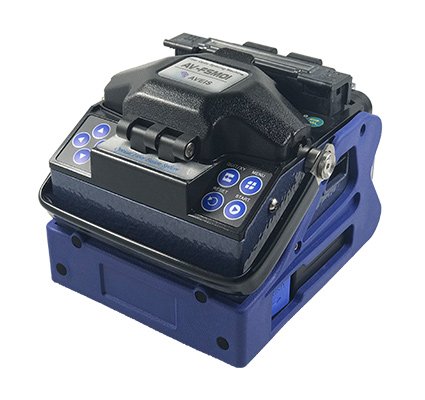

The fusion splicer is used for splicing two optical fibers end-to-end by fusion. It is an indispensable tool for fiber OSP and indoor cable network installation. There are many models of fusion splicers available, varying in features and capability and cost. With hundreds of options to choose from, this task can become very difficult in choosing the right splicer for the job. In this article, we will discuss about how to find the best fusion splicer for your application in the following aspects.
First please ensure your work request: which construction project type?
The longer the spliced cable, the higher the precision of the splicer.
How to judge the accuracy of the fusion splicer? Three indicators:(Contact me for AVEIS machine fusion loss, fusion time:5s/7s and heating time:12s/25s)
Single Fiber Fusion Splicer VS. Ribbon Fusion Splicer
Single fiber splicers and mass or ribbon splicers are two main types fusion splicers in the market. You should choose the right one from them according to your specific applications.
Single Fiber Fusion Splicer
Single fiber splicers usually splice 250-micron fiber, but can also hold 900 micron jacketed fiber, flat drop cable and splice on connectors (also known as splice-on-connectors) used mostly for FTTH applications as well.
Ribbon Fiber Fusion Splicer
Ribbon splicers can splice 1 to 12 fibers all at once. The fiber holders determine the number of fibers you can splice at once. Mass splicers are not nearly as popular as the single fiber splicers, but if used on cable where more than one fiber needs to be spliced they are extremely efficient. When fiber counts of over 96 are needed, there can be up to a 65% savings on per splice costs. Let’s say on average a single fiber splice costs $25 and a ribbon splice is $110 each. At a location that needs 144 splices, the single fiber splicer would run a cost of $3600. A ribbon splicer would only perform 12 splices at a total of $1320
6 motors Fiber Fusion Splicer VS. 4 motors Fusion Splicer
Recently 6 motor fusion splicer has become a trend for choosing a splicer, but not many people understand the real difference between 6 motor and 4 motors splicers.
6 motors
6 motor splicer is composed by 2 driving motors, 2 aligning motors and 2 focusing motors, the extra 2 focusing motors are installed on the optical lens, the motors will change the distance between the fiber and lens to make different image focusing. Once the fiber is placed, the motor will drive the lens closer or further away from the fiber so the fiber image will be displayed differently on the monitor, the software will process the image and auto ID the fiber type, for instance , users put SM fiber on the left holder of splicer, MM fiber on the right holder, after closing the cover , the auto focusing kicks in , based the reflection ratio the preset software will identifier the fiber type, splicer will give the warning that there are 2 different fiber about to make a fusion , then the users will understand maybe they are putting the wrong fiber, so they can change the fiber to SM-SM or MM-MM, it definitely helps the beginners to do the right fusion.
4 motors
4 motor splicer has only 2 driving motors and 2 aligning motors, it is still based the fundamental 3 axis, PAS alignment technology, only without the auto fiber ID function.
Conclusion
Not to mention that 4 motor splicers are simpler in structure, less malfunction, easy for repair and maintenance. But what about the accuracy? fiber core alignment is based on clear identification of fiber core and fiber clad, if the fiber core can't be cleared distinguished by splicer how accurate it can be? Besides the auto ID function, 6 motor splicer does have more advantages, fiber core can be better identified which means more accurate.
In the market, the famous brands for fusion splices are Fujikura, Sumitomo
and Furukawa from Japan, INNO and ILSINTECH from Korea and Eliok, DVP from
China. Among them, Fujikura is the best over the world at high price. Usually,
the price for Japanese fusion splicer is over 7000 dollars, for Korean fusion
splicer is over 5000 dollars and for Chinese fusion splicer is over 3000
dollars.


